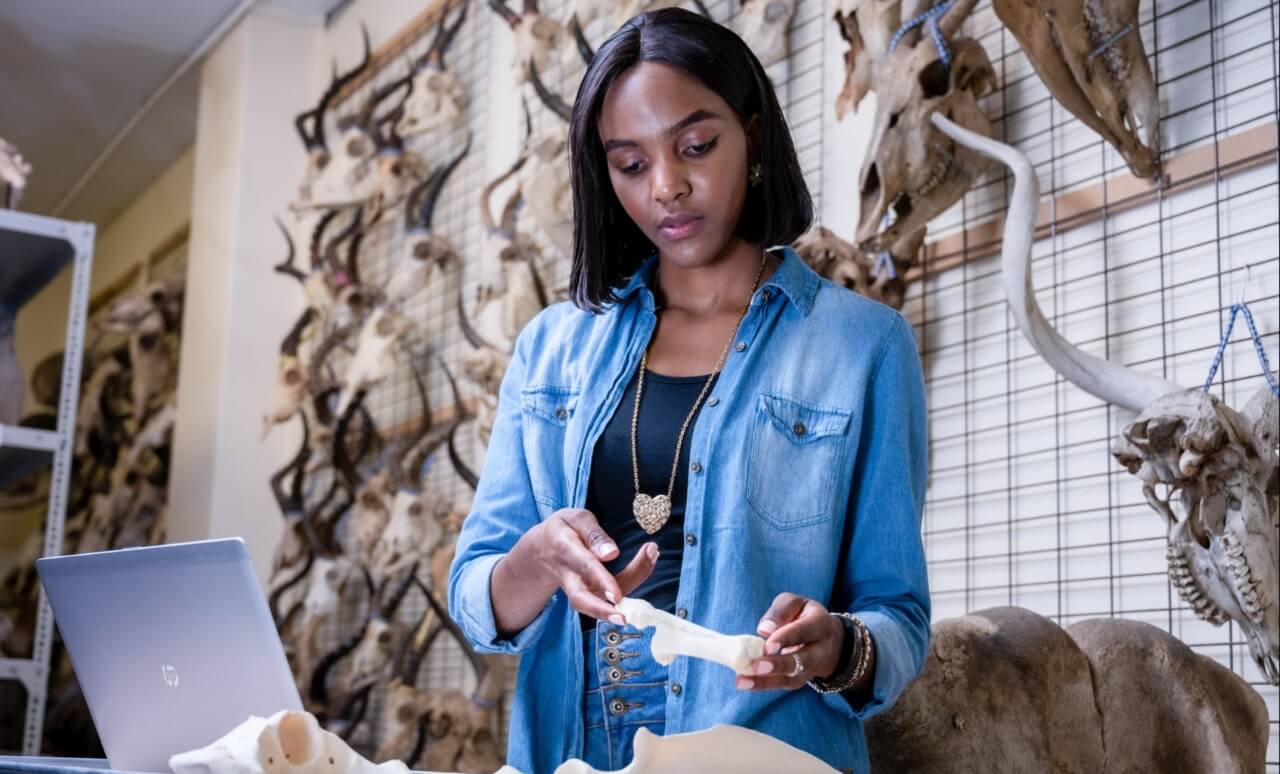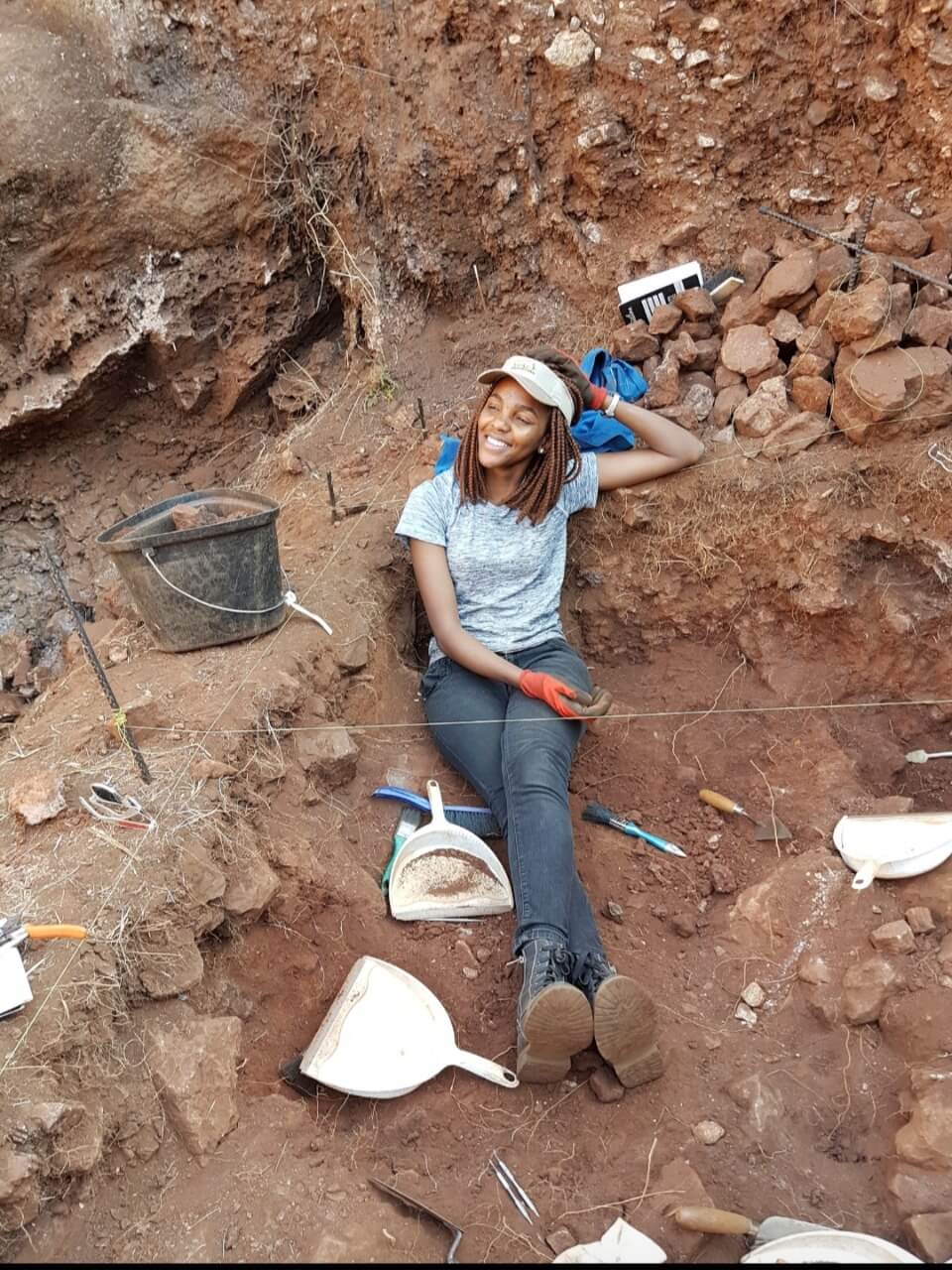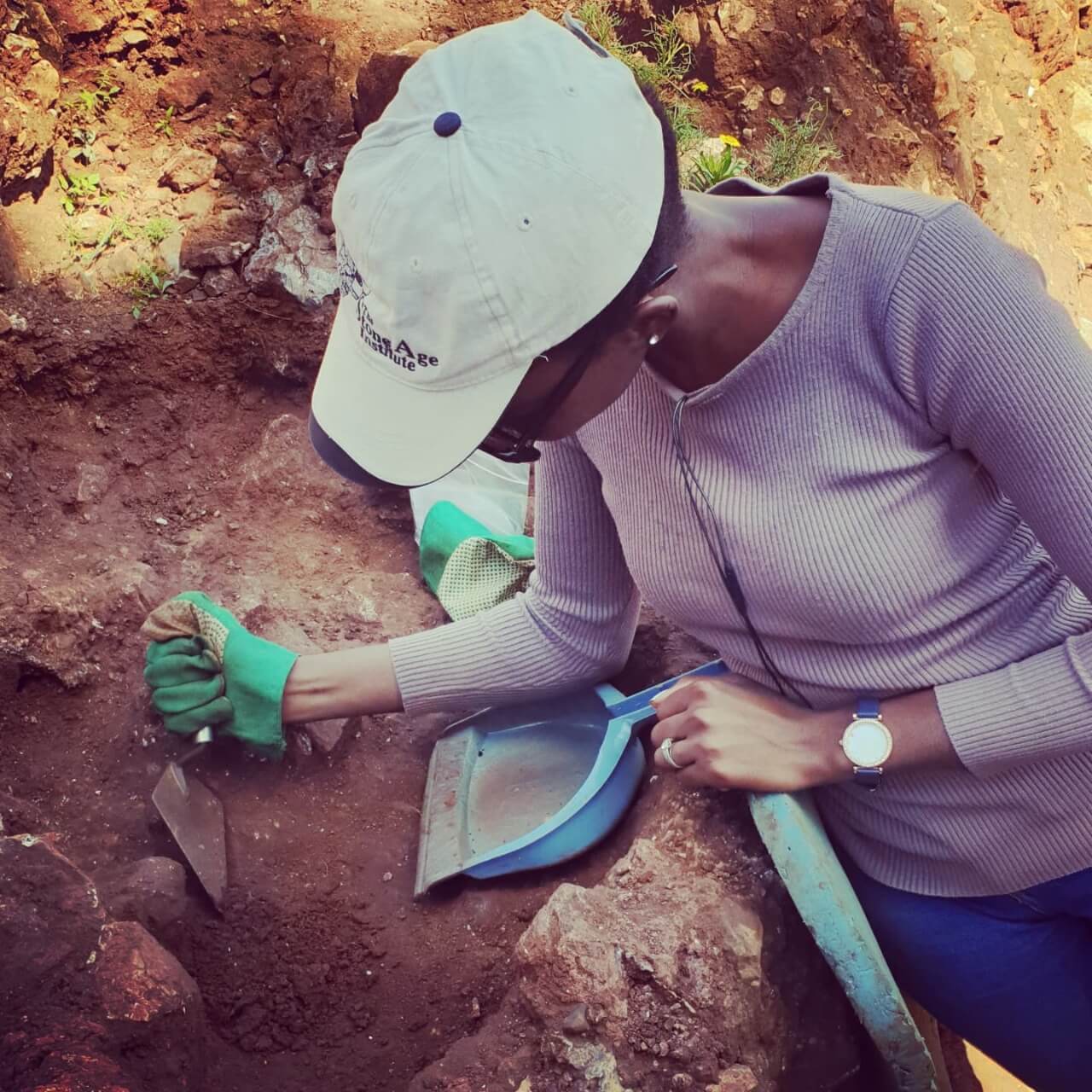Recognise Sambo has always been passionate about education when she was growing in the ‘in the notorious township’ of Tembisa, east of Gauteng. And she ‘clung to it to break barriers and liberate herself from the hardships’ she and her family experienced. She says she owes her love for education to her late mother who was once a school teacher. And it comes as no complete surprise that today she is one of the country’s youngest palaeo-scientists.
Intriguing newspaper article
After she lost her mother at the tender age of eight, Sambo was brought up by her siblings and brother-in-law whom she praised for filling in the deep void her mother left. Sambo says her choice of the palaeontology dates back to when she was in Grade 7, 13 years at the time, when she came across an article from a magazine about the discovery of a partial skull. She found this fascinating and went about to find more about archaeology. Thanks to one of her teachers, whom she still feels indebted to today, she got to know more about it. Since then the word archaeology became embedded in her mind and she consciously took subjects that were aligned to it.
Intriguing area of study
She subsequently enrolled with the University of the Witwatersrand taking up a BA degree in archaeology, anthropology, history, and psychology. She further pursued her BSc Honours and MSc Masters degrees in archaeology. Currently Sambo is in the process of enrolling for her PhD. Sambo says archaeology is extremely fascinating because it is full of exciting discoveries that keep us curious about what was and what could be.
“Our field allows us to deal with real and tangible evidence in our research as we test different theories about our human history and past life. In addition to having the blissful opportunities to travel and network with various scientists who are doing tremendous work, I personally enjoy being out and about in the field and working with fossil fauna in the laboratory, she adds.



Understanding development of life and earth systems
Sambo’s work involves “studying the palaeo-record to uncover the selective pressures (climatic and environmentally driven) that have shaped the evolution of human and animal species and to understand the development of life and earth systems”. Our data are extracted from past records, she says, particularly archaeological remains and historical records to mention a few.
“I specifically reconstruct past environments using fossil faunal remains from the last several million years. Palaeo-science does not only teach us about the origins of species but it also teaches us that the past is connected to the present and the future,” says Sambo. It is thanks to her work that the modern world can have a better understanding that humans did not just emerge as fully modern humans, but have evolved over time and adapted to ever changing climate and environment.
Fewer numbers of women in STEMi
Like most women, Sambo is worried about the involvement of fewer women in STEMi, and she blames this on traditional gender stereotyping. “Traditionally, women have always been assigned roles as caregivers rather than technical careers that in practice require specific skills, e.g. mechanical, information technology and scientific tasks, etc. There is often a distinction between what women and men can do, usually based on physical strength and mental capabilities,” says Sambo. She says this promotes the perception that STEMi is a male-dominated field and therefore making it daunting for women to hop into those careers.
Encouraging girls to take up STEMi
She believes that this challenge can be resolved by “continuously engaging in transformation conversations that buttress issues around women’s inclusivity and the biases women encounter in the STEMi”. In addition, says Sambo, we also need to tackle it by encouraging and recruiting girls from secondary school level to take up STEMi careers, and empower them by giving them opportunities to thrive.
She boasts some of the following as the highlights of her career:
- I received an African Ambassador Scholarship to participate in one of the most prestigious palaeo-anthropological field schools at Olduvai Gorge, Tanzania, for a period of six weeks hosted by Indiana University.
- I gave a fossil talk at the Oprah Winfrey Leadership Academy for Girls, South Africa to educate about opportunities for women in science.
- I was nominated as one of the Top 15% students in my field for the Golden Key Honour Society for the year 2020.
- I am currently part of the remarkable GENUS – DSI-NRF Centre of Excellence in Palaeo-sciences as a Fauna Research Assistant.
- I have participated in several archaeological field schools and excavations in the Cradle of Humankind.
Professional tips and advices
Sambo’s tips to young females who aspire to pursue STEMi studies is that they should understand that aspiration is the foundation and this should be followed by research about the specific career one wishes to follow. Next step is to network, find a mentor, step out of your comfort zone and above all believe in yourself and remember to affirm that there is a space for your kind in your field and that your contribution matters.







